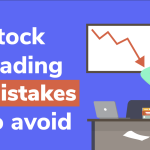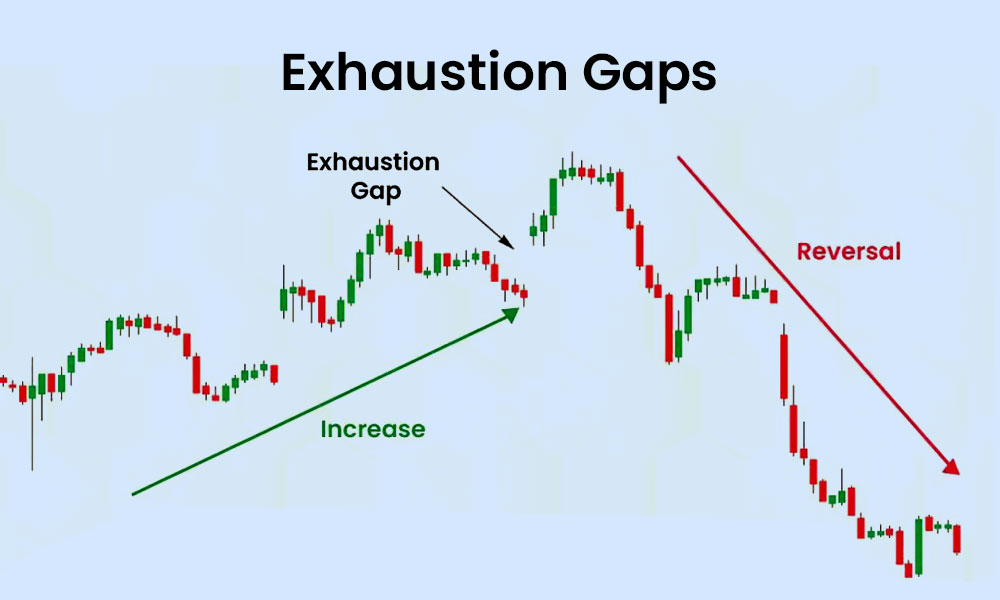
By ATGL
Updated March 23, 2025
Investing in the stock market often raises the question: what is the average return one can expect? For most investors, understanding stock market dynamics is crucial, as it helps set realistic expectations for financial growth. This article tackles these crucial topics by exploring historical data and the typical benchmarks used to measure stock returns.
The S&P 500 index is often considered the standard for gauging market performance due to its broad inclusion of large-cap companies in the U.S. economy. From average S&P 500 return by year to the difference between nominal and real returns, you’ll gain an understanding of stock market seasonality and how indices are calculated. Keep in mind that stock market indexes only provide a glimpse into a complex financial landscape.
Moreover, an array of factors, like inflation, greatly impacts returns, which is why long-term strategies such as diversification and reinvesting dividends are emphasized. We’ll also touch upon investment avenues like ETFs, index funds, and individual stocks, offering you insights into maximizing your returns while managing market timing and dynamics efficiently. Prepare to delve into the essentials for calculating stock returns and mastering investment strategies in the stock market.
Stock Market Average Return
The historical average return of the stock market is about 10% per year, mainly measured by the S&P 500 index, a prominent stock market index. However, yearly returns can swing dramatically due to market dynamics. From 2012 to 2021, the S&P 500 had an impressive average annual return of 14.8%, despite downturns like the 2020 bear market.
Here’s a look at various time periods and their average returns:
- Last 10 years: 12.74%
- Last 20 years: 8.14%
- Last 30 years: 9.64%
- Last 40 years: 11.6%
Calculating stock returns involves comparing the current and past stock prices adjusted for dividends. Inflation over time also affects returns, making long-term investing essential for buy-and-hold investors.
To invest, consider individual stocks, ETFs, or index funds. These options cater to different risk tolerances and investment goals. For instance, mutual funds offer diversification while exchange-traded funds come with lower expense ratios.
Understanding stock market seasonality can also aid in planning investments. Though historical averages offer guidance, they don’t guarantee future results, emphasizing the importance of a well-rounded investment portfolio.
Overview of the S&P 500 Returns
The S&P 500 is a key stock market index that tracks the performance of 500 large companies. It’s often used to measure the average stock market return.
S&P 500 Average Returns:
| Time Period | Average Annual Return |
|---|---|
| 2018-2023 | 11.33% |
| 2013-2023 | 12.39% |
| 2003-2023 | 9.75% |
| 1993-2023 | 9.90% |
| Since 1957 | 9.82% |
From 2018 to 2023, the S&P 500 had a return of 11.33%, influenced by notable market dynamics. Over the past decade, the return was 12.39%, higher due to strong market performance. The 20-year return ending in 2023 was 9.75%, slightly below the long-term benchmark of 10%. Meanwhile, the 30-year average closely matched historical norms at 9.90%, showcasing resilience despite yearly fluctuations.
These returns help investors understand stock market averages over various time frames. While short-term market returns can be volatile due to stock market seasonality and other factors, the long-term perspective often provides a more stable view.
Average S&P 500 Return by Year
The average S&P 500 return varies over different time periods. From 2018 to mid-2023, the average annual return was 11.33%, but inflation-adjusted, it drops to 7.28%. For the 10-year span from 2013 to mid-2023, the S&P 500’s average return was 12.39%. After adjusting for inflation, it’s 9.48%. Over 20 years, from 2003 to mid-2023, the average return was 9.75%, with an inflation-adjusted return of 7.03%. In the last 30 years, the return averages 9.90%, or 7.22% with inflation.
Here’s a quick comparison:
- 5-Year (2018-2023): 11.33% (7.28% inflation-adjusted)
- 10-Year (2013-2023): 12.39% (9.48% inflation-adjusted)
- 20-Year (2003-2023): 9.75% (7.03% inflation-adjusted)
- 30-Year (1993-2023): 9.90% (7.22% inflation-adjusted)
Historically, the S&P 500 has averaged about 10.5% annually since 1957. As a long-term investment, the S&P 500 demonstrates solid growth, especially when considering inflation’s impact on real returns. Understanding the average S&P 500 return by year helps investors align their strategies with financial goals.
Nominal vs. Real Returns
When investing in the stock market, understanding nominal versus real returns is crucial.
- Understanding Nominal Returns:
-
- Nominal returns reflect the total earnings from an investment without accounting for inflation. The S&P 500’s nominal return over the past century has averaged around 10.06% annually. This figure shows substantial growth on paper.
- Importance of Inflation-Adjusted Real Returns:
-
- Real returns adjust for inflation, offering a clearer view of purchasing power growth. The long-term average real return of the S&P 500 stands at approximately 6.78%. While the nominal rate suggests higher gains, inflation can significantly erode buying power. The difference between nominal and real returns highlights that without considering inflation, the actual increase in wealth might be overstated.
This distinction between nominal and real returns is essential for understanding true investment growth. A table or list comparing these could simplify interpretation, but the key takeaway is the need to factor in inflation for a more accurate assessment of financial progress.
Factors Influencing Stock Market Returns
Factors that influence stock market returns are diverse and interconnected. One major factor is market volatility, which can arise due to sudden changes in investor sentiment. This can lead to unpredictable stock price fluctuations.
Economic growth also plays a crucial role. It drives corporate earnings, directly affecting stock returns. When economies grow, companies often perform better, buoying investor confidence.
Interest rates are another significant factor. Changes in rates influence borrowing costs and consumer spending. Lower interest rates can spur borrowing and spending, boosting stock prices.
Geopolitical events can disrupt markets, causing volatility. Wars, conflicts, and political shifts can affect global supply chains and energy costs, influencing investor outlooks.
Other important factors include national elections, which can alter policies and economic strategies. Supply chain disruptions also impact returns by affecting production costs and inventory levels, thus impacting company profitability.
In crafting an investment strategy, it’s crucial to consider these factors. Investors should weigh potential risks and opportunities to better navigate the ever-changing market dynamics.
Strategies for Maximizing Stock Market Returns
Maximizing stock market returns requires a thoughtful and disciplined approach. Investors often implement strategies like buy-and-hold, diversification, and reinvesting dividends to capitalize on the stock market’s average return. Understanding these strategies can lead to more consistent returns and help mitigate risks associated with market dynamics. Long-term investment perspectives and avoiding the temptation to time the market are crucial elements in achieving substantial stock market gains.
Benefits of Long-term Investing
Long-term investing is a cornerstone of successful stock market participation. Historically, the stock market has yielded around a 10% annual return, making it a reliable avenue for wealth creation over extended periods. By maintaining investments through market cycles, investors can benefit from compounding growth. This approach helps smooth out market volatility and supports a strategy where investors ride out short-term fluctuations. Diversified portfolios further cushion against severe market downturns, emphasizing stability and growth potential.
Dollar-Cost Averaging Explained
Dollar-cost averaging is a valuable strategy for mitigating market volatility risks. By investing a fixed amount at regular intervals, individuals avoid the pitfalls of investing large sums during market peaks. This method allows investors to accumulate shares at varying prices, often resulting in a lower average cost per share over time. As a result, dollar-cost averaging not only reduces investment risks but also promotes consistent buying of stocks, regardless of market conditions. Moreover, it helps investors maintain discipline and avoid panic selling.
Importance of Diversification
Diversification is crucial in managing investment risks. With stock market returns influenced by various unpredictable factors, a diversified portfolio balances higher and lower-risk investments. Stock market indexes, like the S&P 500, periodically rebalance to reflect changing economic landscapes, illustrating the need for diversification. Incorporating both stocks and bonds helps stabilize returns, as these asset classes often react differently to economic changes. This balance is especially important as the dominance of certain companies can significantly sway index performance.
Reinvesting Dividends
Reinvesting dividends is a powerful compounding strategy to enhance market returns. By automatically purchasing more shares with dividends, investors continuously increase their holdings. This not only builds investment portfolios but also leverages the benefits of fractional shares. Over time, reinvestment substantially boosts returns by allowing dividends to earn returns, known as compounding. Studies have shown that reinvested dividends contribute significantly to capturing long-term gains, accounting for a notable portion of total returns.
Avoiding Market Timing Errors
Avoiding market timing errors is essential to maximize stock market returns. Attempting to predict precise market highs or lows can lead to misguided investment decisions, affecting overall returns. Strategies like dollar-cost averaging mitigate this risk by ensuring consistent investments, regardless of market conditions. A buy-and-hold approach allows investors to capitalize on long-term growth potential, steering clear of timing pitfalls. Reacting to market volatility by hastily exiting investments could result in missed gains, underscoring the importance of a steady, disciplined investment approach.
Managing Your Investment Returns with Above the Green Line
Managing your investment returns can be streamlined with a company like Above the Green Line. The average stock market return is about 10% annually, as measured by the S&P 500. However, when adjusted for inflation, the real average return drops to around 6.37%. Diversifying your portfolio and reinvesting dividends can help maximize your returns through compounding.
A buy-and-hold approach supports long-term gains by weathering market volatility. Past events like the tech bubble and the Great Recession show how returns can dip below average, emphasizing the importance of a solid strategy. Here are some key strategies:
- Diversify with mutual funds and ETFs
- Opt for fractional shares to ease into investments
- Work with financial advisors to manage risk tolerance
Incorporate these methods into your portfolio management to reach returns join Above the Green Line. Using stock market indexes, you can gauge performance and plan accordingly. Calculating stock returns involves assessing annual return data and understanding stock market seasonality which can influence performance. Keeping an eye on market dynamics and inflation over time is crucial for sustaining buying power. Investing wisely prepares you for a steady and profitable financial journey.






